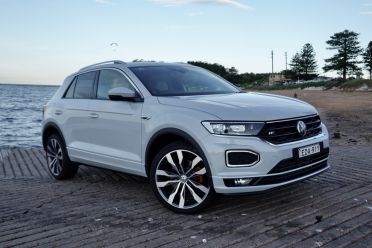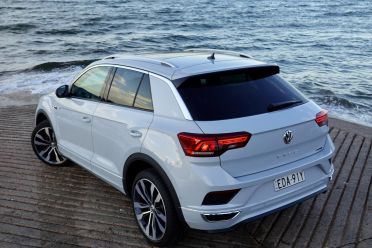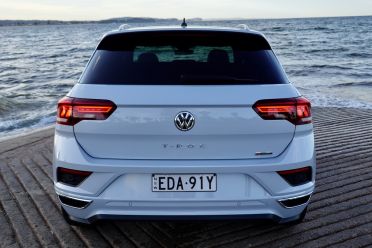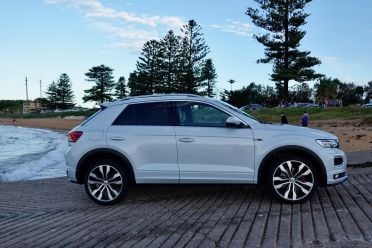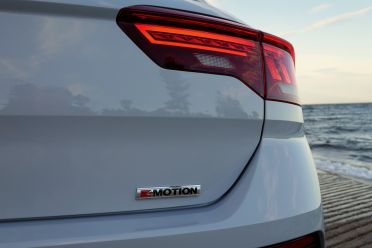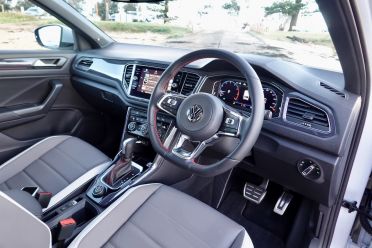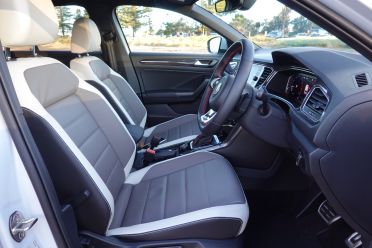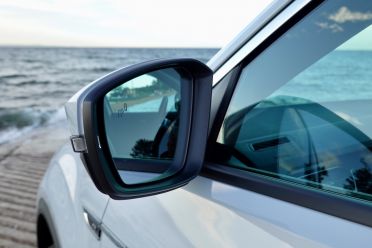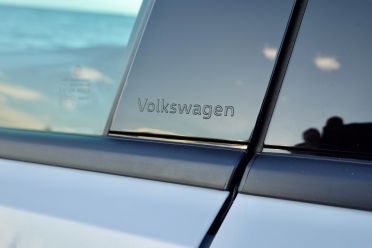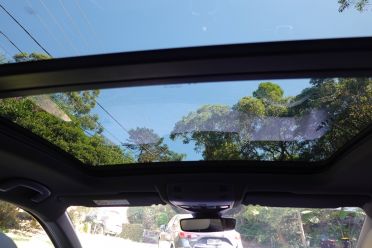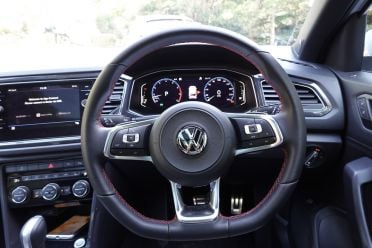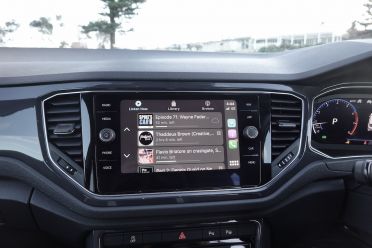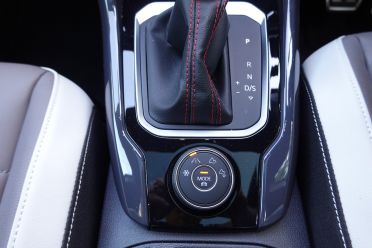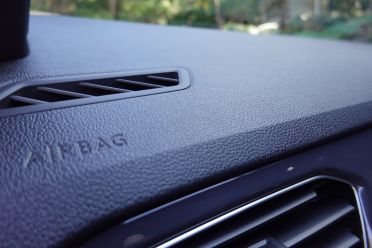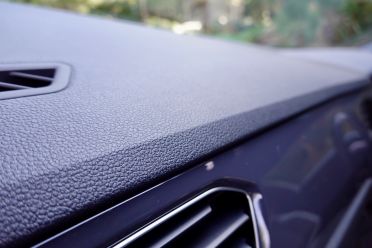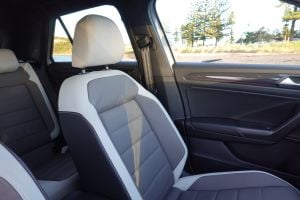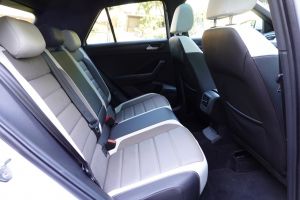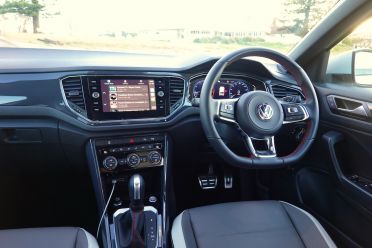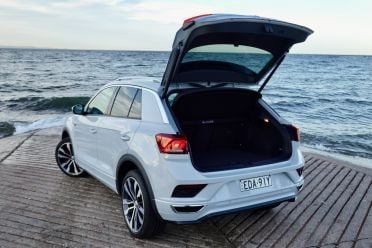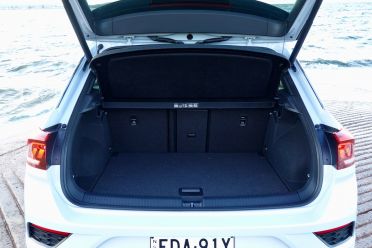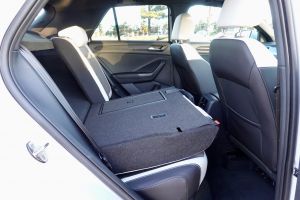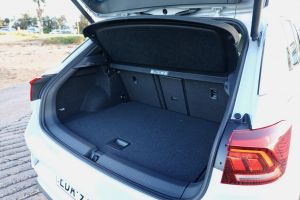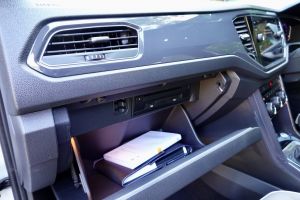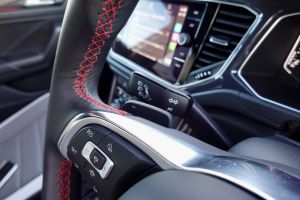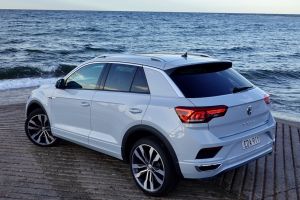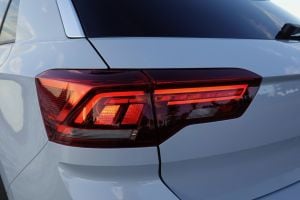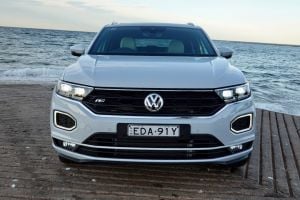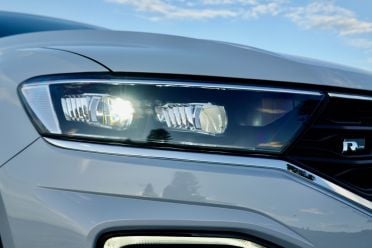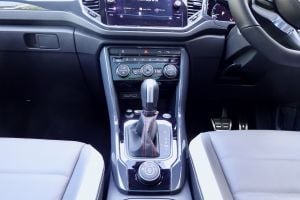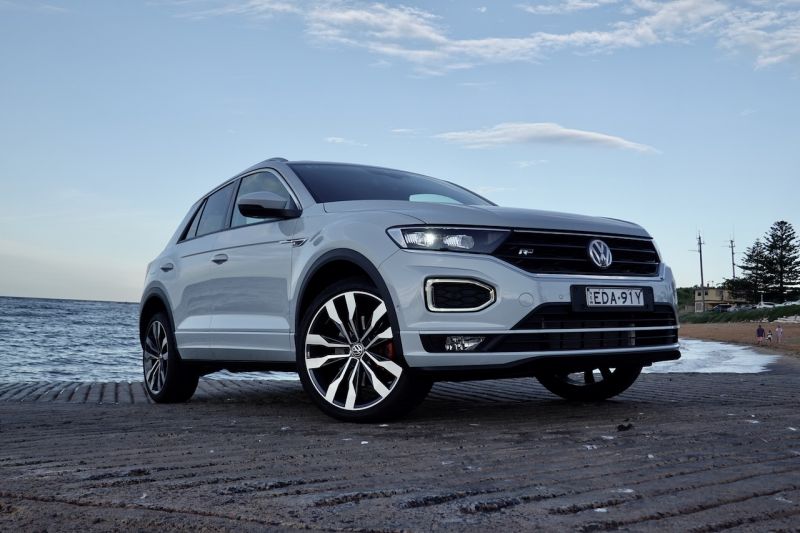You only need to glance at the all-new Volkswagen T-Roc to warm to it. Thank the wider-than-usual track, clean lines, and hunkered-down stance.
There’s no mistaking it for anything but an SUV from Volkswagen, but T-Roc looks to have a bit of that elusive x-factor giving it a more distinctive, desirable attitude than its larger Tiguan brother.
Volkswagen seems to have taken a leaf out of the Volvo XC40‘s book, and is all the better for it. It’s contemporary, classy and looks more substantial than the popular Hyundai Kona and all-new Kia Seltos. There are further comparisons, too.
The designer of the Volvo worked at the Volkswagen Group, and the dimensions are similar on both, particularly the width.
Thing is, T-Roc launched in Europe three years ago, so it’s not exactly new. In fact, it was unveiled as a concept at the 2014 Geneva motor show, before the production version launched in 2017.
What’s more, you can bet there’s a midlife update already on the horizon, which will most certainly deal with one or two shortcomings we have with this first iteration.
Whichever way you look at it, the T-Roc has the hallmarks of a strong contender.
It’s a formula that fits the bill for several buying groups, from active singles and young families to downsizing retirees. There’s no shortage of competition vying for the same pool.

How much does the Volkswagen T-Roc cost?
Volkswagen is offering the T-Roc in just two variants, both with a 2.0-litre four-cylinder turbocharged petrol engine.
The 140TSI Sport is priced from $40,490 before on-road costs, while the T-Roc X starts at $42,990 before on-roads.
That pits the Volkswagen T-Roc against a slew of top-spec rivals, including the Mazda CX-3 Akari AWD Diesel ($40,350) and Kia Seltos GT-Line ($41,990), along with lower-end versions of premium cars such as the Audi Q2 35 TFSI ($41,950), Mini Countryman ($40,500), and Lexus UX200 Luxury ($44,450).
Stretch a little further and you’d even take a look at Volvo XC40 T4 Momentum from $46,990 before on-roads, just don’t expect all the kit without ticking plenty of boxes.
What do you get?
You can spend thousands more than the sticker price of your T-Roc if you want a burger with the lot.
The Luxury Package costs $3500 and adds a panoramic glass sunroof, Vienna leather upholstery, and an electrically-operated tailgate. Ticking the Sound and Style package box nets you adaptive chassis control, 19-inch Suzuka alloys, and a 300W sound system for another $2000, while Metallic or Pearl effect paint with set you back another 600 bucks.
If you can’t stretch to that package, though, the cupboard is far from bare in T-Roc 140TSI Sport.
Standard kit includes automatic LED headlights, rain-sensing wipers, an auto-dimming rear-view mirror, and 18-inch Sebring alloys with sports suspension.
The entry-level T-Roc is also equipped with R-line exterior trim highlights, privacy glass, a digital instrument display, dual-zone climate control, keyless access, and power folding door mirrors.
The real bargain here is the limited edition T-Roc X. With a premium of just $2500 you get those 19-inch Suzuka wheels, adaptive suspension, premium audio, an electric tailgate, and sports cloth upholstery.
Mind, you’ll still have to fork out $1900 for the panoramic sunroof.
Is the Volkswagen T-Roc safe?
Along with its inventory of creature comforts, the Volkswagen T-Roc gets a full suite of active safety technology that saw it awarded a five-star ANCAP safety rating when tested in 2017.
All-speed autonomous emergency braking, while lane-keeping assist with lane-departure warning is fitted to all T-Rocs.
The Volkswagen T-Roc scored 96 per cent for adult occupant protection, 87 per cent for child occupant protection, 79 per cent for pedestrian protection, and lower 71 per cent for safety assist measures.
What is the Volkswagen T-Roc like on the inside?
The interior is tidy, except for the expanse of cheap-looking, hard plastic adorning the entire dash.
It’s used top to bottom, as well as on the door cards and grab handles. It doesn’t fit with the rest of the car, and tends to overshadow the otherwise excellent ambience. It’s a bit of a shame to be honest.
We’re told this issue will be addressed on the updated version when it lobs here in a year or two, remembering the Volkswagen T-Roc has been around in Europe since 2017.
The rest of the cockpit is excellent, with driver-centric screens for instrumentation and infotainment, which are some of the best in the business offering brilliant clarity and good functionality to boot.
Volkswagen has always excelled when it comes to seat design and driving position, and the T-Roc doesn’t disappoint.
I don’t mind the two-tone upholstery on the front pews in our tester one bit. The leather feels soft and there’s just enough bolstering for a bit of fun in the corners, although they err on the side of comfort.
Apart from those nasty hard plastics everything else feels like a premium Golf inside, with an almost identical fit-out.
The wheel is leather-wrapped with contrast red stitching and a flat bottom. It’s one of the most satisfying to the touch and pleasing on the eye, and still has the controls for cruise and media at your fingertips.
Few OEMs do digital instruments as well as the Volkswagen Group. It’s the clarity of colour and sharpness of the edges that make them so good.
In the T-Roc it’s the iridescent blue virtual binnacles that standout most, but also the size of the dials themselves makes the display easy to read with a quick glance.
Same goes for the infotainment screen. This is the benchmark by which others are judged in this segment – leaving the Volvo XC40 out of the comparison based on price.
It’s classed as a compact SUV but the Volkswagen T-Roc will surprise with the space in the cabin and boot.
Less surprising, actually, when you know that it shares the same MQB platform as the Golf, Audi A3, and Skoda Octavia. The new T-Roc is 250mm shorter than the Tiguan, for context.
Carrying capacity is better than you might expect, with more boot space (392L) behind the rear seats than a Golf (380L) but more importantly, the load height is perfect for sliding in heavy grocery bags.
Carrying capacity expands to a useful 1237L with the rear seats folded, but they’re not quite flat, which is a bit of a pain when transporting stuff like surfboards or ladders.
While this tester is only average height (175cm) and who’s seating position is close to the steering wheel, rear legroom is excellent, as is headroom. You can also slide your boots under the front seats – always a bonus for passengers.
There’s plenty of USB ports across both seat rows and rear air vents which is a plus, given some manufacturers overlook such necessities.
What’s under the bonnet?
This is where the T-Roc starts to shine. Lurking under the bonnet is one of the most powerful powertrains in the class.
Packing 140kW of power between 4900 and 6000rpm and 320Nm of torque from 1500 to 4800rpm from its 2.0-litre turbocharged petrol engine, it can scoot from standstill to 100km/h in a brisk 7.2 seconds thanks to a seven-speed dual-clutch transmission driving all four wheels.
How does the Volkswagen T-Roc drive?
Right from the get-go the T-Roc delights in its ability to get off the line quickly and effortlessly.
More impressive still is the lack of any real turbo lag, to the point where I was trying to trip it up and find the usual torque gap. There isn’t one to speak of, with throttle response being pleasantly sharp.
It’s also nowhere near as noisy as I thought it might be under heavy load. It’s a nice surprise in the T-Roc, because usually when you punch these small-displacement turbo engines the response can be the torturous sound of a sewing machine.
The T-Roc is around 100kg heavier than the 2.0-litre Golf GTI so dynamically it’s not in the same league, but it feels surefooted and relatively light on its feet. Fun to drive without being outright engaging is how I would describe my experience behind the wheel.
The front-biased all-wheel drive system works well in pushing torque to the wheels that need it most which makes the T-Roc feel nicely balanced. It’s a very easy SUV to live with on a day-to-day basis, and parking is a cinch.
Our tester was fitted with the larger 19-inch wheels and yet ride comfort was excellent even on rough surfaces. Occasionally sharp edges on broken roads transmit some harshness through the cabin, but it’s rare.
We also had the optional adaptive suspension, so I’ll put ride comfort down to that system’s effectiveness. The moment you switch from Comfort to Sport things firm up appreciably.
How much does the Volkswagen T-Roc cost to run?
Not only does the 2.0-litre engine pack a punch, it’s usefully frugal using 7.2L/100km on a combined cycle. We never saw more than 9.7L/100km in our four days with the car.
The T-Roc is covered by Volkswagen’s five-year, unlimited-kilometre warranty and a year of free roadside assist.
Volkswagen also has a variety of service plans through its Assured Service and covering owners for the first three or five scheduled visits with upfront service costs.
CarExpert’s take on the Volkswagen T-Roc
It might be late to the party here in Australia but the Volkswagen T-Roc has what it takes to climb to the top of the totem pole.
It’s a standout looker stuffed with loads of kit, excellent packaging, and plenty of go with dynamic capability to boot.
Tick.



